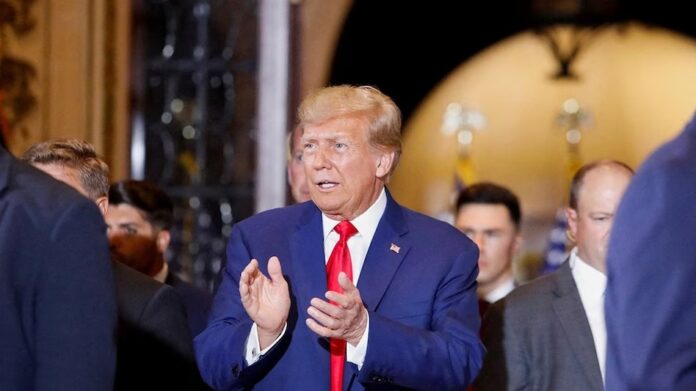New Trade Shockwaves: Algeria, Iraq, Sri Lanka, and Others Hit with Up to 30% Duties
On July 9, 2025, former U.S. President Donald Trump announced a new round of tariff hikes targeting six additional countries—marking a sharp escalation in his broader strategy to reshape global trade dynamics. Through formal letters sent to foreign leaders and public posts on his Truth Social platform, Trump introduced import duties ranging from 20% to 30%, effective August 1.
The targeted countries include Algeria, Iraq, Libya, Sri Lanka, Brunei, Moldova, and the Philippines—all of which face significant economic exposure to U.S. markets. The move follows an earlier series of tariff threats that hit key players like Pakistan, Russia, Cambodia, and even Canada earlier this year.
The Specific Tariffs Announced
According to the official communication, the breakdown of the new duties is as follows:
- 30% tariffs: Iraq, Algeria, Libya, Sri Lanka
- 25% tariffs: Brunei, Moldova
- 20% tariffs: Philippines
These nations had been on a 90-day grace period since April, which was meant to give them time to negotiate bilateral trade agreements with the United States. Trump’s July directive marks the end of that window—and a declaration that these countries failed to meet U.S. demands.
Trump’s Trade Strategy: A Return to “Tariff Diplomacy”
The July 9 move reflects Trump’s broader philosophy on trade—using tariffs not only to punish perceived unfair practices but to force foreign governments into bilateral negotiations. It is a return to the trade doctrine seen during his first term, when China, Mexico, and the European Union faced similar economic pressure.
In his Truth Social post, Trump stated:
“These countries continue to take advantage of American workers, manufacturers, and farmers. The era of free-loading is over. Either we get fair deals, or they get steep tariffs.”
The tone mirrors his “America First” approach—tying economic nationalism with political messaging aimed at protecting domestic jobs and reducing trade deficits.
Target Countries: Why These Nations?
Analysts were quick to point out that this list includes countries with limited leverage in global trade negotiations but which have consistent trade surpluses with the U.S. These nations are strategically important, even if their trade volumes are not massive individually:
- Iraq and Libya export oil and petroleum products—key U.S. imports in energy.
- Algeria trades primarily in natural gas and raw materials.
- Sri Lanka and Brunei export apparel and electronics, respectively.
- Moldova and the Philippines have grown into outsourcing and electronics hubs in recent years.
The new tariffs are seen by some experts as “low-risk, high-symbolism” moves. These countries are unlikely to retaliate in ways that severely hurt U.S. interests—yet the optics of taking a hard line play well with Trump’s political base.
Economic Impact: More Than Symbolic?
Although the countries affected don’t represent a large portion of U.S. trade—Iraq’s U.S. trade deficit was about \$5.9 billion in 2024, and Sri Lanka’s about \$2.6 billion—the implications could still be significant:
- Import Prices May Rise: U.S. companies importing goods from these countries will face higher costs, which could be passed down to consumers—particularly in sectors like textiles, electronics, and oil.
- Supply Chain Disruptions: Many U.S. firms rely on low-cost goods or raw materials from these nations. With duties increasing up to 30%, some companies may be forced to seek alternative suppliers or shift operations—potentially at great cost.
- Global Reaction Risk: Though smaller than China or the EU, some of these countries may retaliate or turn to global institutions like the World Trade Organization (WTO) for arbitration.
What’s the Political Calculus Behind the Move?
This escalation comes at a pivotal moment in U.S. politics. With the 2024 election cycle concluded and Trump back in the political spotlight, he’s moving quickly to reassert his influence over foreign policy.
Critics argue the July 9 tariffs are more about posturing than policy, designed to send a message both to U.S. voters and to larger trade partners watching from the sidelines.
“This isn’t about Algeria or Brunei,” said one trade policy analyst. “It’s about showing China and the EU that Trump is serious—and unpredictable.”
Indeed, major economies like Vietnam, the United Kingdom, and the European Union are reportedly still in trade talks with U.S. negotiators, hoping to avoid inclusion in the next round of tariff letters.
Reactions from Targeted Countries
While official responses are still developing, early signs point to frustration and confusion among the affected governments.
- Sri Lanka’s Ministry of Trade described the move as “deeply disappointing,” noting that no breakdown in communication had been reported before the tariff letters were sent.
- Philippines trade officials said they were surprised by the inclusion, given ongoing bilateral discussions on trade and labor.
- Algeria has yet to issue a formal response, though diplomatic sources say they may lodge a complaint with the WTO.
Several of the targeted countries lack the economic leverage to impose counter-tariffs of similar scale—though they could seek collective action through regional blocs like ASEAN or the African Union.
Will More Countries Be Hit?
If history is any guide, Trump’s tariff campaigns tend to expand over time. In April, the initial round of letters targeted 10 countries. By July, the total number affected has ballooned to over 16. Analysts expect more letters could be issued before the August 1 deadline if key nations fail to reach deals.
Trade watchers are especially monitoring:
- Vietnam and Thailand, which enjoy large trade surpluses with the U.S.
- India, which has a long-running trade friction history with U.S. administrations
- The European Union, especially Germany and France, for automotive and technology imports
What’s Next for U.S. Importers and Exporters?
For U.S. businesses, the key takeaways are:
- Review your supply chains now: If you import from the affected nations, expect cost increases starting August 1.
- Watch for customs updates: The U.S. Trade Representative (USTR) may release clarifying rules or timelines.
- Prepare for price volatility: If these countries respond in kind, tariffs may spread to U.S. exports—particularly in agriculture, energy, or tech.
Conclusion: A Tariff Era Reignited
With the issuance of the July 9 “tariff letters,” Trump has reignited the flames of a new trade war, albeit one targeted at smaller economies. While the financial stakes may be limited in scale compared to battles with China or the EU, the symbolism and strategic intent are undeniable.
As the August 1 enforcement date looms, the world is watching whether these tariff threats will trigger concessions—or whether they’ll backfire, ushering in a new wave of trade instability.







